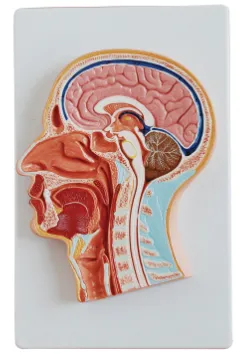

Article tag: Midhead section model| head anatomy model| medical anatomy model|
Without the midhead model, medical research and teaching face a number of significant challenges that are not only related to the transfer and understanding of knowledge, but also directly affect the precision and efficiency of clinical...
Without the midhead model, medical research and teaching face a number of significant challenges that are not only related to the transfer and understanding of knowledge, but also directly affect the precision and efficiency of clinical practice.

First, in terms of medical education, the midhead section model is a key tool for students to understand and master the anatomy of the head. Without this model, students will have to rely more on two-dimensional images in books or verbal descriptions from teachers, which often make it difficult to form an intuitive sense of space and dynamic understanding. The complexity of anatomy requires learners to be able to perceive and understand through a variety of senses such as vision and touch, and the lack of models will greatly weaken the effect of this learning process, which may lead to students' insufficient in-depth and comprehensive grasp of the anatomical structure of the head.
Secondly, in the field of medical research, the midhead section model is an important auxiliary tool for researchers to explore the mechanism of head diseases, evaluate the therapeutic effect and carry out surgical planning. Without the support of the model, researchers will face a lot of inconvenience when carrying out relevant research. For example, in the study of disease mechanism, researchers need to use models to simulate the structural changes of the head in the state of disease in order to deeply understand the pathological process of the disease. In terms of surgical planning, the model can help doctors evaluate the feasibility of the surgical path, predict the surgical risk, and optimize the surgical plan. The lack of these tools will greatly increase the difficulty and uncertainty of research.
In addition, the midhead section model also plays an important role in the bridge construction between medical teaching and clinical practice. Through simulation operations and case studies, students can practice their surgical skills and improve their ability to deal with complex situations in a near-real environment. Without the support of the model, it will be difficult for students to get enough practical opportunities and feedback, which will affect the cultivation and improvement of their clinical skills.
To sum up, without the midhead section model, medical research and teaching will face multiple challenges such as limited knowledge transfer, increased research difficulty, and reduced practice opportunities. Therefore, we should attach great importance to the application value of the midhead section model in medical education and research, and constantly explore and improve the design, production and use of the model to better serve the medical education and clinical practice.